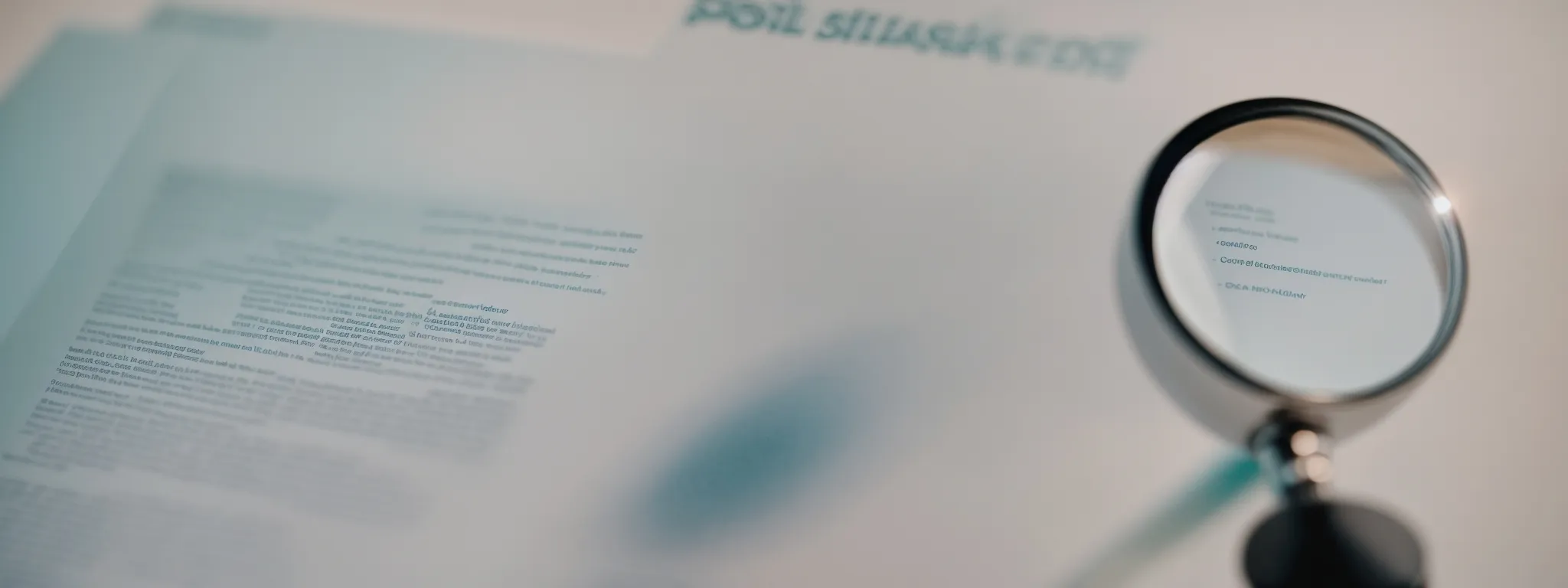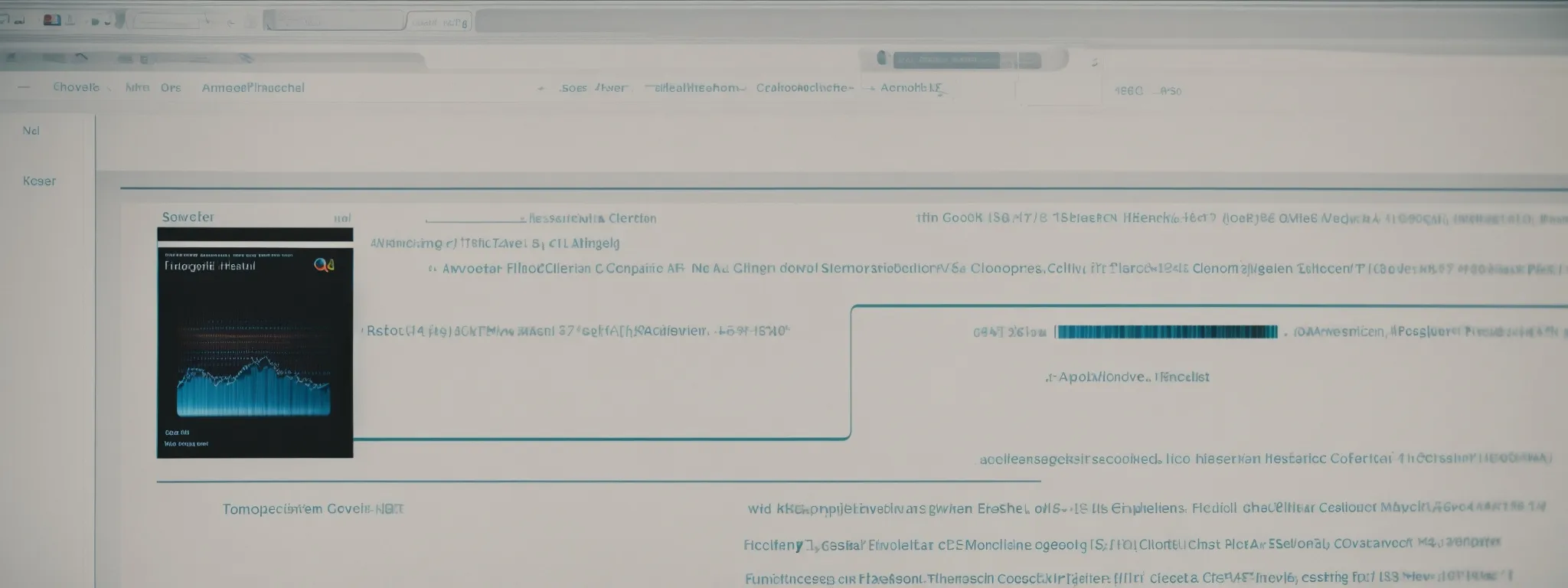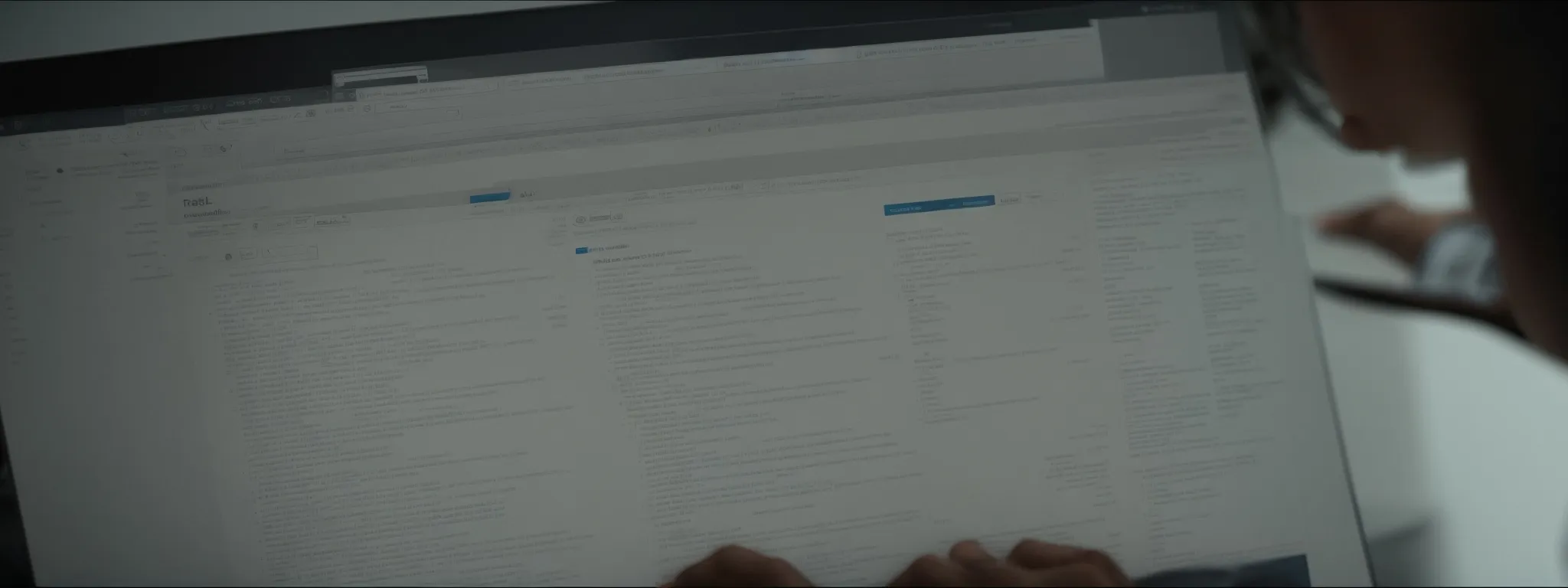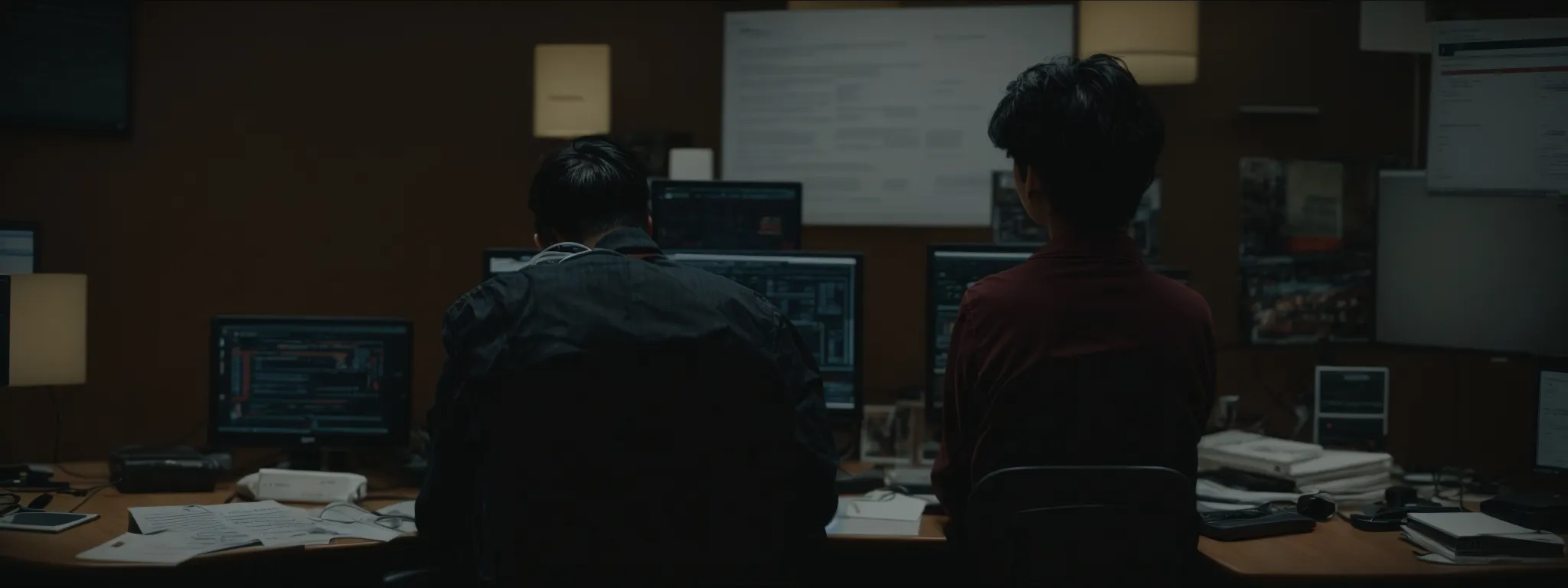SEO Cloaking
Understanding SEO Cloaking and Its Impact on Your Website Cloaking in SEO is a deceptive technique where a website presents different content or URLs to search engines […]
Understanding SEO Cloaking and Its Impact on Your Website
Cloaking in SEO is a deceptive technique where a website presents different content or URLs to search engines than it does to users, a practice akin to a magician’s sleight of hand, yet far less entertaining and far more risky.
It attempts to manipulate search engine rankings while compromising the very essence of user trust and search engine guidelines.
Despite its temporary and illusory gains, the repercussions of cloaking can lead to severe penalties from search engines and damage a website’s reputation.
Recognizing the nuances and consequences of this black hat SEO tactic is essential for website owners committed to sustainable online growth.
Keep reading to unveil the true impact of cloaking on your website and discover compliant SEO strategies with LinkGraph’s SEO services that enhance visibility without bending the rules.
Key Takeaways
- Cloaking as an SEO Strategy Presents Content Differently to Search Engines Than to Users, Risking Penalties and Loss of Trust
- LinkGraph’s SEO Services Advocate for Ethical SEO Practices, Avoiding the Use of Deceptive Techniques Such as Cloaking
- While Some Forms of “White Hat” Cloaking May Be Permissible, Alignment With Search Engine Guidelines Is Essential
- Utilizing Tools Like SearchAtlas SEO Software Is Crucial for Detecting and Rectifying Cloaking to Preserve a Website’s Integrity
- Maintaining Transparent and Honest SEO Practices Ensures the Credibility and Long-Term Success of a Website in SERPs
Demystifying SEO Cloaking: An Overview for Webmasters

The term “cloaking” conjures images of concealment and deception, and in the context of SEO, these connotations are not far from the truth.
Masters of web development and owners of websites alike face the complex challenge of improving search engine rankings while adhering to the stringent guidelines set forth by search engines.
Cloaking, a technique shrouded in controversy, involves displaying different content to search engine crawlers than to actual users, an act that can significantly impact a website’s reputation and visibility online.
LinkGraph’s SEO services understand this intricate dynamic, underlining the importance of transparency in their approach and the potential risks associated with such controversial SEO techniques.
Breaking Down What Cloaking Means for SEO
Cloaking in SEO is a high-risk strategy, where content presented to a search engine spider radically differs from that viewed by a visitor. This SEO cloak aims to manipulate search engine rankings by misleading the search engine bot about the actual content of the webpage. It stands as a direct violation of webmaster guidelines and can lead to severe penalties from search engines.
By implementing cloaking, a user may be led into viewing a page that diverges from their initial search criteria, detrimentally affecting the user experience. LinkGraph’s SEO services emphasize that genuine, value-driven content aligned with user intent is pivotal for sustainable search engine optimization and avoids the utilization of any such deceptive SEO techniques.
Why Cloaking Is a Controversial Technique
Cloaking draws the ire of search engines for good reason; it deliberately creates a dissonance between what is indexed and what is actually served to users. This disparity not only contravenes search engine policies but fundamentally undermines the trust that users place in search results, potentially damaging the credibility of the entire search ecosystem.
LinkGraph’s SEO services stress the egregious nature of cloaking as it seeks to gain unfair advantage in SERPs by hoodwinking the search engine crawlers. Recognizing the inherent risks of this black hat SEO technique, LinkGraph advocates for ethical SEO practices that preserve integrity while enhancing a site’s visibility and user engagement.
Exploring the Different Methods of SEO Cloaking

In the intricate realm of search engine optimization, SEO cloaking emerges as a sophisticated yet contentious tactic that can significantly impact a website’s search engine ranking.
As website developers seek to cultivate an online presence fortified by high visiblity, they often encounter a crossroads between ethical strategies and the underhanded allure of cloaking.
This approach employs various methods to present disparate content to search engine bots versus human site visitors.
Three prevalent techniques that illuminate the complexity of cloaking include user-agent based cloaking, which varies the content delivered based on the identifying user agent of the requester; IP-based cloaking that differentiates access using the IP address, and the application of JavaScript to selectively serve content.
Each method carries its own set of implications, challenges, and potential for misuse, firmly placing them under the scrutiny of those who underscore the value of transparent and fair SEO practices, much like LinkGraph’s SEO services.
Dissecting User-Agent Based Cloaking
User-Agent based cloaking detects the type of entity requesting the webpage, often distinguishing between a human visitor and a search engine crawler. Should the requester be a web crawler like Googlebot, it will be shown a different, often more SEO-optimized version of the website than a regular user would see.
LinkGraph’s SEO services recognize the pitfalls of such practices and instead prioritize an authentic on-page SEO service that improves visibility without compromising ethical standards. Utilizing legitimate methods, it ensures that both users and search engine spiders experience the same content, maintaining a website’s integrity and trust with search engines.
Unpacking IP-based Cloaking Tactics
IP-based cloaking is a tactic which alters the content served to a user based on their IP address. It identifies and differentiates the origin of the traffic, enabling the website to show one version to visitors from a specific locale or network and a different version to search engine bots often for the purpose of inflating search rankings.
This form of SEO misdirection carries significant risk; website owners may inadvertently provoke penalties if search engines detect the deception. LinkGraph’s SEO services advise against such strategies, upholding the principle that consistency in content regardless of IP address fosters both a reputable online presence and a trusting relationship with search engine algorithms.
| SEO Cloaking Method | Content Variation | Potential Risks | LinkGraph’s Stance |
|---|---|---|---|
| IP-based Cloaking | Content alters by user IP | Search penalties, loss of trust | Advocates ethical SEO practices |
Analyzing the Use of JavaScript for Cloaking
The use of JavaScript for SEO cloaking presents a crafty way of altering user experience based on whether the visitor is a regular user or a search engine bot. This method involves scripting that selectively serves content, often richer in keywords and SEO-friendly elements, to search engine spiders, while presenting a different, perhaps less optimized version to actual users.
Analyzing the impact of JavaScript-based cloaking reveals a critical issue: it disjoints the user experience from the content search engines evaluate, potentially creating a false representation of a website’s relevance and quality. Such tactics can lead to a website’s downfall in search engine rankings once detected:
- Search engines might impose penalties or outright ban the website from search results.
- Users could encounter a diminished user experience, leading to increased bounce rates and diminished website credibility.
- The reputation of the website can suffer, as the deception becomes apparent to both users and search engine authorities.
The Risks of Using Cloaking on Your Website

Entering the labyrinth of search engine optimization, website architects confront various tactics, with cloaking standing out as a divisive strategy.
This duplicitous approach, manipulating the perceived content by search engines versus human visitors, can have severe repercussions.
Focused on understanding the penalties for cloaking and assessing the long-term risks for SEO strategy, LinkGraph underscores the imperative for sustainable methods that align with search engine guidelines.
Maintaining a stringent adherence to ethical SEO practices ensures the longevity and integrity of a site’s digital footprint, cementing a path away from the precarious edge where cloaking lies in wait.
Understanding the Penalties for Cloaking
When it comes to SEO cloaking, search engines like Google are clear in their opposition: employing such tactics can lead to harsh penalties, including the demotion of rankings or complete removal from the index. These penalties are a manifestation of the search engines’ commitment to providing users with authentic, reliable search results and can have substantial implications for any website caught using cloaking techniques.
LinkGraph’s SEO services are acutely aware of the stringent enforcement search engines put forth against cloaking. Recognizing that the repercussions extend beyond immediate penalties, such as eroding user trust and long-term brand damage, LinkGraph counsels adherence to white-hat SEO services that garner favorable search engine results without resorting to such frowned-upon methods.
| SEO Concern | Reason for Penalty | Consequence |
|---|---|---|
| Cloaking | Misleading search engine bots and users | Lowered rankings or removal from the index |
Assessing the Long-Term Risks for Your SEO Strategy
Embracing SEO cloaking carries the threat of eroding a website’s long-term SEO foundation, a risk too substantial for those aiming to establish enduring online visibility. LinkGraph’s SEO services steer clients towards sustainable SEO tactics that bolster a site’s ranking and credibility over time, without the need for deceptive measures that can backfire and destabilize an established SEO strategy.
A strategy reliant on cloaking not only jeopardizes standing with search engines but can also deter repeat visits, as user trust dwindles upon the realization that content was misrepresented. LinkGraph champions ethical SEO services that invest in the user experience and content relevance, ensuring a resilient and progressive search engine presence for websites under their guidance.
Identifying Cloaking on Your Site: Tools and Techniques

Unveiling the invisible can be a complex endeavor, particularly when a practice like cloaking is designed to slip undetected into a website’s architecture, posing a potentially detrimental impact on its credibility and search rankings.
Discerning cloaked content requires a keen understanding of the tools and techniques available to website owners and SEO professionals alike.
In the realm of search engine dynamics, where the integrity of a website’s content is paramount, leveraging sophisticated SEO tools to identify and rectify such deceptive strategies becomes essential.
Alongside automated solutions, manual checks stand as a vital component of a thorough audit, empowering stakeholders to safeguard their digital realms against the deceptive chameleon that is SEO cloaking.
Utilizing SEO Tools to Detect Cloaking
LinkGraph’s SearchAtlas SEO software arms website developers with cutting-edge tools to unveil instances of cloaking on their digital properties. By displaying discrepancies between what a web crawler and a human user see, this SEO tool aids in detecting and dismantling deceptive practices that could tarnish a website’s search engine standing.
Comprehensive scans performed by this advanced software replicate the activities of various user agents and IP addresses, revealing any cloaked content stealthily presented to search engine spiders. LinkGraph employs such proactive measures to ensure that the content integrity of a client’s website remains unblemished by black hat SEO cloaking, maintaining the website’s reputable presence on search engine results pages.
Manual Checks You Can Perform for Cloaking
Beyond the utilization of sophisticated software, webmasters can engage in manual verification to identify the presence of cloaking on a website. Through side-by-side comparisons of search engine crawler views and user views typically by using different devices or altering user-agent strings in a web browser, discrepancies indicative of cloaking can be uncovered.
LinkGraph’s expertise underpins the significance of inspecting a site’s response to varied IP addresses, a surefire way of evaluating whether content differentiation is at play. Deliberate inquisitiveness, married with detailed observation of how content is served to distinct user profiles, forms a sound defense against the deceptive implications of cloaking SEO techniques.
Debunking Myths: When Is Cloaking Actually Permitted?

In the rigorous debate surrounding search engine optimization, cloaking typically garners condemnation for its deceptive approach to content presentation.
Nonetheless, the industry is rife with misconceptions regarding the absolute nature of cloaking’s appropriateness.
Scrutiny reveals scenarios within SEO where “white hat” cloaking is not only accepted but can be instrumental in delivering optimal user experiences without jeopardizing search engine compliance.
In this context, exploring cloaking’s legitimate use cases becomes imperative for professionals seeking to navigate the fine line between strategic advantage and SEO malpractice.
Exploring the Concept of “White Hat” Cloaking
The exploration into “White Hat” cloaking highlights an aspect where select circumstances permit content differentiation without contravening search engine guidelines. It is a nuanced territory where the intentions and outcomes align positively with providing users contextually appropriate content.
This bespoke practice, deemed permissible under specific parameters, effectively reconciles the differential serving of content with adherence to a user’s explicit needs and preferences:
- When delivering language-specific content to users based on geographic location, ensuring accessibility and relevance.
- In instances where bandwidth-optimized content is served to users with limited internet speeds, thereby enhancing the user experience without skewing search engine rankings.
LinkGraph’s SEO services incorporate “White Hat” cloaking to serve tailored content that enhances user experience while abiding by search engine policies, affirming the principle that ethical SEO can include selective content presentation when used responsibly and transparently.
Legitimate Use Cases of Cloaking in SEO
Within the tapestry of search engine optimization, certain instances that employ variation in content delivery are not only permissible but encouraged for Enhancing User Experience. A quintessential example of legitimate cloaking is found in altering content for users with visual impairment, offering accessibility where standard rendering does not suffice.
Another sanctioned use case of cloaking emerges when search engines themselves advise on altering content to prevent the indexing of sensitive information while serving the complete content to verified users. This approach strikes a balance between security and accessibility:
- Adapting content for accessibility aids without altering core information for search engine crawlers.
- Serving non-indexable content to authenticated users, protecting sensitive data while preserving the integrity of search listings.
Google’s Stance on SEO Cloaking: Official Guidelines

Google’s perspective on search engine optimization is pivotal for any entity seeking digital success, with its guidelines frequently setting the universal standard for ethical SEO practices.
Within this framework lies the unequivocal stance on the controversial technique of SEO cloaking.
Google’s structured policies outline the parameters for acceptable content presentation, dictating the conditions under which websites can operate without falling foul of manipulative practices.
A comprehensive examination of these conventions, coupled with illustrative case studies, offers clarity on the repercussions of contravening Google’s anti-cloaking directives, illuminating the path for webmasters to maintain a transparent, user-centric online presence.
Reviewing Google’s Policies on Cloaking
Google’s stringent policies on SEO cloaking carve a clear boundary for what the search engine deems as manipulative content practices. The search engine behemoth stands firmly against displaying different content to its crawlers than to users, positioning such tactics as deliberate violations of their comprehensive webmaster guidelines designed to ensure a trustworthy and relevant search experience.
Through LinkGraph’s SEO services, webmasters can align their strategies with Google’s regulations, which unequivocally classify cloaking as a black hat SEO technique with potential for severe penalties. Moving with the undercurrent of this guidance ensures that the content is consistently presented to both search engine spiders and human visitors, leading to a genuine and reliable search engine presence.
Case Studies of Google’s Actions Against Cloaking
Google’s decisive actions against websites employing cloaking techniques are well-documented through various case studies. These instances reveal the search giant swiftly demoting or even entirely removing web pages from its index when they have been caught serving different content to users than to the Googlebot.
One notable instance involved a prominent website that saw a significant drop in search engine rankings after Google detected and penalized it for implementing IP cloaking to give preferential treatment to search engine bots. This enforcement underscores Google’s commitment to safeguarding the integrity of its search results against manipulative SEO practices.
How to Clean Up Cloaked Content on Your Website

In the intricate landscape of SEO, unintentional or deliberate cloaking can impede a website’s performance, necessitating a comprehensive clean-up process.
Addressing the presence of cloaked content on a site not only re-establishes transparency with search engine crawlers but also reinstates the site’s commitment to honest and user-focused practices.
By meticulously executing the step-by-step removal of cloaking techniques, website owners can ensure their digital platform adheres to the search engines’ strict guidelines.
A systematic approach to cleaning and post-cleanup verification sets the foundation for sustained compliance, safeguarding a website’s integrity in the expansive terrain of search engine optimization.
Step-by-Step Removal of Cloaking Techniques
Initiating the removal of cloaking techniques from a website starts with the identification and documentation of all elements that serve different content to search engine bots versus users. This process requires thorough analysis using SEO tools like LinkGraph’s SearchAtlas software, which can detect disparities in content served to various user agents and IP addresses.
Subsequent to pinpointing the offending content, webmasters must revise or eliminate the scripts, configurations, or server-side settings responsible for the cloaking. This ensures uniformity in the presentation of content across all platforms and user criteria:
- Disable any server-side rules or scripts specifically designed to detect and serve altered content to search engine crawlers.
- Remove or update content delivery mechanisms that differentiate user experience based on IP address or user agent.
- Routinely monitor website content post-cleanup to ensure compliance with search engine guidelines and prevent the reintroduction of cloaking methods.
Ensuring Your Site Is Compliant Post-Cleanup
Ensuring post-cleanup compliance for a website requires vigilant monitoring and an ongoing commitment to observe search engine guidelines. It’s essential that any changes made to address cloaking are thoroughly documented and reviewed to confirm that the website’s presentation of content remains consistent across all user interactions.
After deactivating tactics associated with cloaking, the website must be submitted to search engines for re-evaluation. This step is critical as it prompts the search engines to re-crawl the site, reassessing the content to ascertain that former discrepancies have been resolved:
- Submit the updated sections of the website to search engines for indexing.
- Review and respond to any messages or penalties from search engine webmaster tools in a timely fashion.
- Conduct regular audits using tools such as LinkGraph’s SearchAtlas SEO software to detect any inadvertent cloaking errors.
The Real Impact of SEO Cloaking on User Experience

At the intersection of search engine visibility and ethical digital marketing, SEO cloaking presents itself as a formidable quandary—capable of significantly influencing user experience with the touch of subterfuge.
As webmasters grapple with the dual aims of elevating their website’s stature and preserving a scrupulous online ambiance, understanding the ramifications of cloaking is indispensable.
This complex SEO maneuver can profoundly undermine a website’s perceived authenticity, which in turn has far-reaching implications for user trust and engagement—an essential cornerstone for any successful online enterprise.
How Cloaking Can Affect Your Site’s Credibility
Cloaking undermines a site’s credibility by creating a disparity between what search engines index and what users actually experience. When visitors encounter content that fails to correspond with their search expectations, trust erodes, questioning the legitimacy of the website’s offerings.
The credibility of a website forms the bedrock of its digital reputation and user confidence; the usage of cloaking can severely tarnish this perception. Without consistency between indexed content and actual pages, users may view the site as unreliable, deterring future interactions and damaging the site’s standing both with users and search engines.
The Consequences for User Trust and Engagement
Engagement plummets when users uncover that the content of a website does not align with their original search intent or expected information. As a direct consequence, a website mired in cloaking tactics can expect an increase in bounce rates, as users quickly retreat from the web page in search of more reliable sources.
The degradation of user trust can be rapid, a swift response to perceived deceitfulness when the reality of a webpage betrays user expectations shaped by search engine results. A breach in such trust is especially damaging, as rebuilding user confidence is significantly more challenging than establishing it initially.
Protecting Your Website From the Temptation of Cloaking

Within the multifaceted sphere of Search Engine Optimization (SEO), cloaking represents a seductive shortcut on the journey to heightened visibility; however, its detrimental effects call for prudent strategies to inoculate websites against such deceptive impulses.
Best practices for maintaining ethical SEO require steadfast dedication to honesty and transparency.
Webmasters and SEO professionals are wise to seek out alternatives to cloaking that foster organic SEO improvement, thereby promoting a website’s growth and reputation while ensuring compliance with search engine standards.
These approaches not only fortify a website’s standing in search engine results pages (SERPs) but also preserve the indispensable trust of its audience.
Best Practices for Maintaining Ethical SEO
LinkGraph’s SEO services champion the vital importance of maintaining an ethical SEO landscape by advocating for transparency and Adherence to Search Engine Guidelines. Their commitment to white-hat SEO practices involves creating high-quality, relevant content that serves the interests of both the search engine and the user, facilitating a natural and merit-based improvement in search rankings.
Through the employment of SearchAtlas SEO software, professionals can further safeguard against unethical SEO maneuvers, ensuring all SEO efforts are scrutinized and fine-tuned to prevent any inadvertent cloaking or other questionable tactics. LinkGraph’s expertise ensures that SEO remains a powerful tool for organic growth, lending credibility and authority to websites in the digital marketplace.
Alternatives to Cloaking That Improve SEO Organically
Organic SEO enhancements pivot around the fundamental principles of quality and relevance, sidestepping the dubious route of cloaking. LinkGraph’s SEO services galvanize this approach through robust white label SEO and SEO content strategies that solidify search rankings by enriching user experience and providing true value to the user’s journey.
Concentrating on tailor-made SEO tactics such as comprehensive on-page SEO services and judicious blog writing services, the path to a fortified web presence is marked by authenticity. LinkGraph ensures that websites reap long-term benefits through dedicated efforts that favor continuous, cloaking-free improvement and adherence to search engine protocols.
Conclusion
Understanding SEO cloaking is crucial for ensuring the long-term success and integrity of your website.
Employing cloaking techniques may offer short-term gains in search rankings but inevitably risks severe penalties from search engines and damages user trust and engagement.
To maintain your site’s credibility and search engine compliance, it is essential to avoid deceptive practices and instead invest in ethical, organic SEO strategies.
By focusing on creating high-quality, relevant content and leveraging white-hat SEO tactics, you can improve your website’s visibility and reputation without resorting to the controversial and high-risk method of cloaking.
Using sophisticated tools like LinkGraph’s SearchAtlas software for regular audits can also prevent inadvertent cloaking, safeguarding your website against potential penalties and ensuring a consistent and transparent user experience.














































































